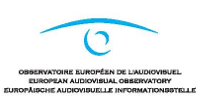Switching to Digital TV in Russia and Ukraine
Friday, February 19th, 2010
European Audiovisual Observatory publishes new report
STRASBOURG — The switchover to digital television has begun in earnest in Western Europe. The first region in France to experience total analogue switch-off is the Alsace. Coincidentally, the Alsace-based European Audiovisual Observatory, part of the Council of Europe in Strasbourg, has just published a brand new report on the work in progress to prepare the switch-over process further afield – in Russia and Ukraine.
The leading article of this new IRIS plus report, Digital Television, has been written with the insider knowledge of Andrei Richter of the Moscow Media Law and Policy Center and Taras Shevchenko from the Kiev Media Law Institute. It kicks off with an analysis of national policy toward digital TV in both countries. In Russia, the so-called Federal Target Programme governing the switchover process was signed in September 2009 by Putin, covering the period 2009 – 2015. The Ukrainian State Programme of Introduction of Digital Television and Radio Broadcasting also foresees completion of the switch-over process by 2015.
In terms of the overall costs of digital switchover, the respective State programmes of the two countries expect the following financial contributions from private companies and the respective governments to finance the switch-over period:
Expenses for the Digital Switch-over in 2009-2015 (planned)(million EUR) (1):
Public Private
expenses investments Total
----------- ----------- -----------
Russia 1,716 1,036 2,752
Ukraine 0.76 364.24 365
(1) Based on Russia’s FTP and Ukraine’s State Programme.
The report then looks at the legal concepts, decrees and other acts which will legitimise the switch-over process. Russia, for example, remains one of the few European countries without a parliamentary statute on broadcasting or the audiovisual media.
Moving on to analyse logistics of the various aspects of the switch-over process, this report looks in detail at the various geographical stages defined by the two countries in the implementation of the switch-over plan; the moratorium for new analogue frequencies; the future organisation of the line-up of the multiplexes and related must-carry rules; the operators in both countries who will responsible for transmission and indeed the provision of set-top boxes.
The switch-over to digital will obviously create new challenges for the legal structures in both countries, particularly in terms of licensing and the role of the respective licensing bodies as well in terms of ownership issues.
Richter and Shevchenko conclude their leading article by pointing out that the advent of digital television in Russia and Ukraine is driving the creation of new regulations to deal with this new sector. They question, however, the real potential for achieving “adequate legal regulation and the setting of transparent parameters for technical advancement” as a result of this process. Further challenges to be faced, according to the report, are the domination of state-run broadcasters in Russia which could result in the allocation of the first three terrestrial multiplexes to incumbent players favoured by government policy. In addition, the report points to the risk of collapse of hundreds of smaller regional broadcasters facing the high cost of switch-over, which may indeed endanger the “pluralistic and manifold programming and information” made theoretically possible by digital television.
The related reporting section of this new publication provides short, country-related articles which give the latest state of play in the transition to digital television in countries such as Bulgaria, Ireland, Romania, Slovakia and Serbia.
A final, ZOOM section, provides market data on the digitisation of households on a country-by-country basis and a breakdown of household reception equipment by type of digital platform. This section also includes table giving the time schedule for the roll-out of DTT in Europe for 35 countries.
For further information on Russia – we’ll be publishing a brand new IRIS Special extended report entitled: ‘The Regulatory Framework for audiovisual media services in Russia in early March.’
Latest News
- Spideo and OTTera unveil personalisation collaboration at NAB Show 2024
- Amagi integrates Intertrust DRM for FAST services
- Vantiva has shipped 22 million Android TV set-top boxes
- Newsmax launches subscription-based app with 24i
- Slovak Telekom and T-Mobile CZ upgrade video streaming with 24i
- CTV/OTT expected to be fastest growing media channel in U.S. in 2024